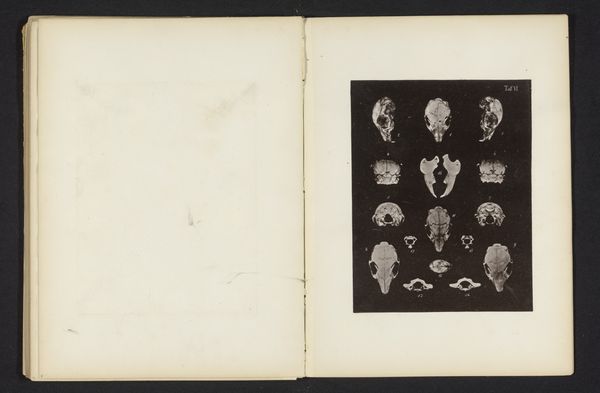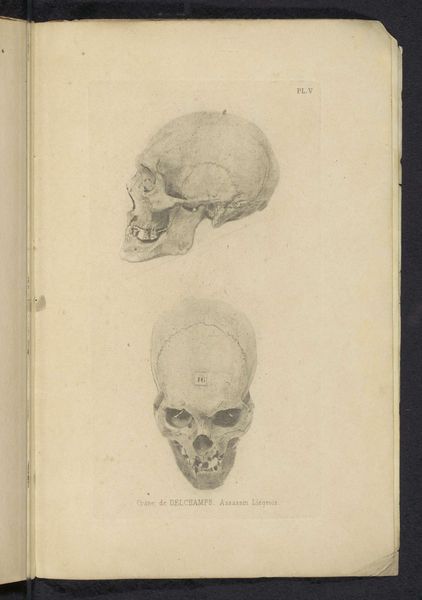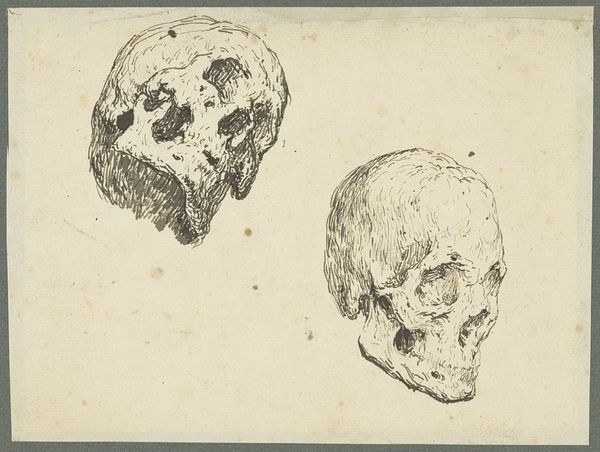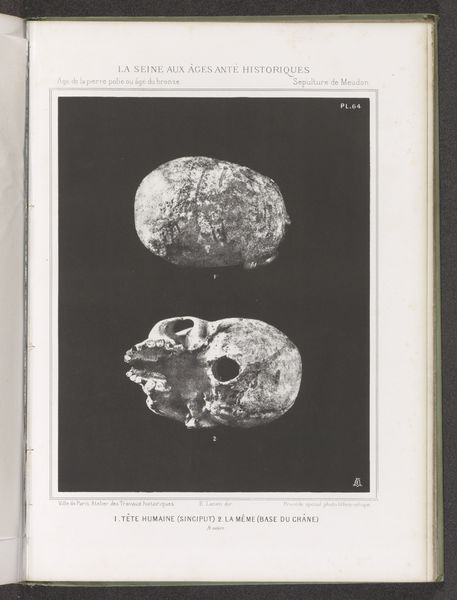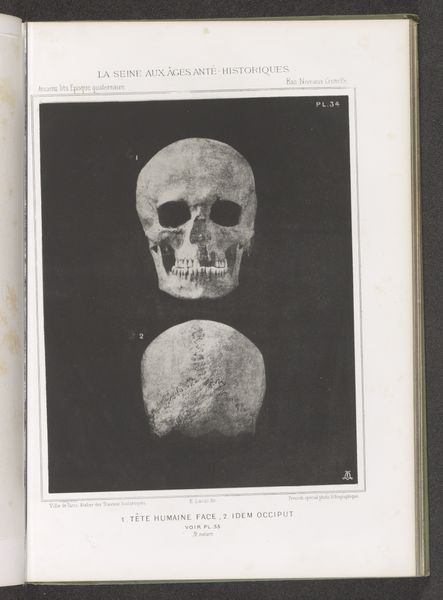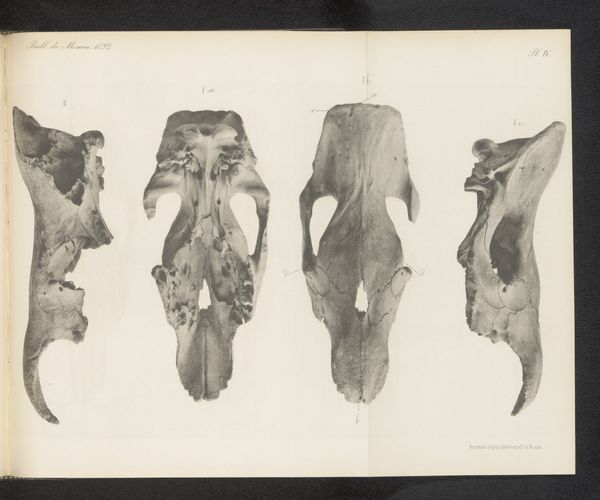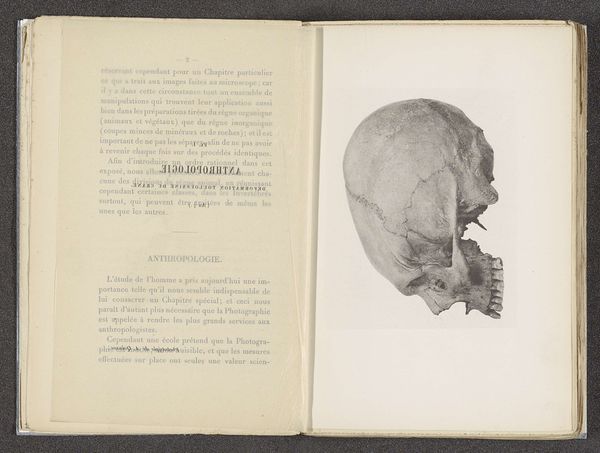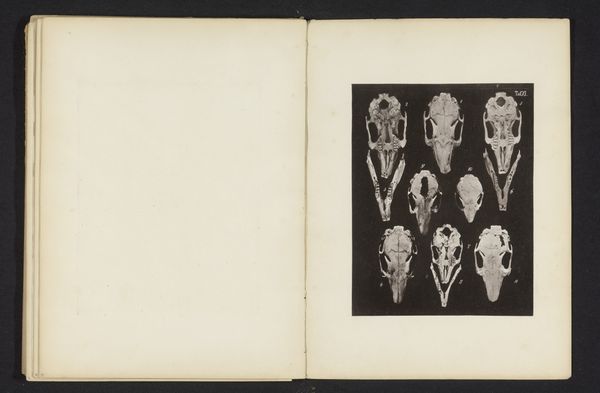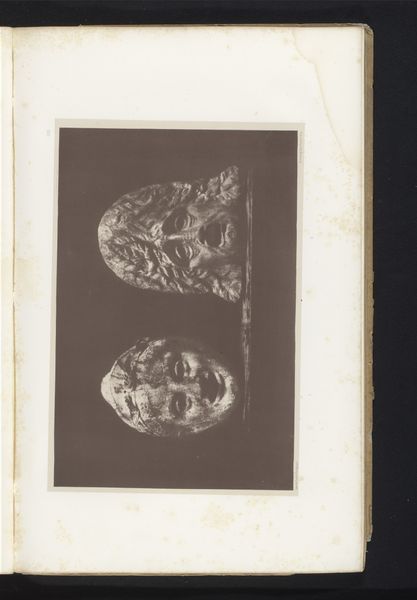
Dimensions: height 206 mm, width 115 mm
Copyright: Rijks Museum: Open Domain
Editor: This is "Voor- en zijaanzicht van een schedel," or "Front and side view of a skull," created before 1875, currently housed at the Rijksmuseum. It's a gelatin-silver print. I find the stark presentation quite striking, almost scientific. What context can you provide? Curator: The image is compelling because it blends science, art, and the social anxieties of the 19th century. It presents the skull not just as an object, but as a document of human existence and potential difference. Given that this image comes from a time defined by both the enlightenment project of scientific categorization *and* pervasive class inequalities and pseudo-scientific race theory, it’s vital to ask: who was thought to possess these skulls, and for what purpose were they studied? Editor: That's fascinating. The clinical presentation definitely has me rethinking my initial response. Were these images widely accessible? Curator: Probably only to specific scientific communities, especially anatomists and early anthropologists. The very act of categorizing and presenting human remains this way reinforces specific power structures and control over defining who is seen as human and who is not. It subtly hints at hierarchies, doesn't it? The clean, almost clinical setting invites us to think objectively, yet the subject itself – death and human remains – evokes strong emotional responses. Editor: Yes, I see it now. The intersection of scientific inquiry and societal power dynamics makes the image so much more complex. I hadn’t initially considered its potential role in reinforcing inequality. Curator: Exactly! And understanding those tensions is crucial when we engage with historical images like this one. These images don’t just present "facts," but reveal so much about the cultural context in which they were produced, collected, and displayed. Editor: This has really shifted my perspective. I see that this isn't simply a still life, but an artifact deeply embedded in historical power dynamics. Thanks for sharing your insights!
Comments
No comments
Be the first to comment and join the conversation on the ultimate creative platform.


